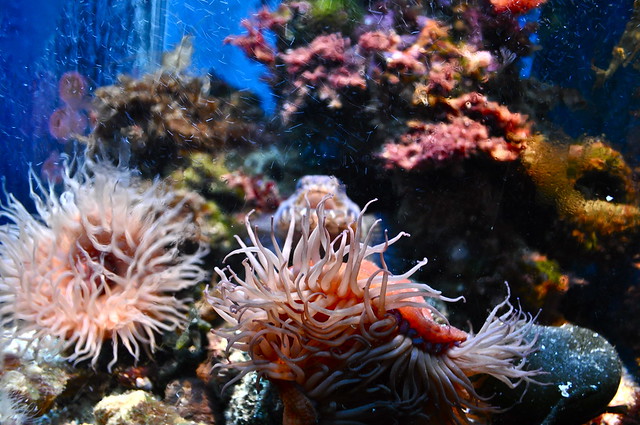A reef aquarium is vastly different from a fish only aquarium. Not only will you need different equipment, but you will need a whole different skill to create and maintain a successful reef tank. Although you can keep fish in your reef tank, the main focus of a reef tank is to display live coral. Introducing certain species of fish can help in maintaining the reef environment and special care should be taken when selecting the appropriate species to compliment the coral in your tank.
 |
| Reef Tank - Photo by shesarii |
Reef tanks are primarily filtered by the live rock through a natural process. This biologic filtration is usually supplemented by protein skimmers. Protein skimmers use what is called the foam fracture process to eliminate waste matter and filter the water. A combination of biological filtration and protein skimmers is very effective at keeping a reef tank in ideal condition.
Unlike fish only tanks, reef tanks require constant water movement. Different types of coral require different flow rates, but as a rule of thumb, a flow rate of 10x will be sufficient. What this means is that the flow rate needs to be 10 times the capacity of the tank (in gallons) per hour. It’s important that you adjust and fine tune the flow rates to the specific coral in your tank.
One of the most popular methods of creating water flow is by using power heads. They are simply small water pumps under the water that creates an underwater stream when you alternately switch them on an off. By using a wave timer, the pumps are synced to create a water flow. A newer method for creating and managing water flow is the use of submersible propeller pumps. Although they are more expensive, they use less power and can produce greater water flow compared to power heads.
Another important aspect of reef tanks is lighting. While fish only tanks use lighting primarily for display, a reef tank needs light to “feed” the coral. Since the coral uses photosynthesis to stay alive, lighting is the most important aspect of keeping your coral alive.
The lighting levels required for each type of coral varies widely. While some types of rock require very high levels of light, some only need low light levels. Special care should be taken when picking coral for your tank to ensure that the lighting of your tank is sufficient. As a general rule, 5 to 8 watts per gallon should be sufficient for the most common coral.
| By WriteSmith - Articles Source: Reef Tanks And What You Need To Know Before You Start One |
